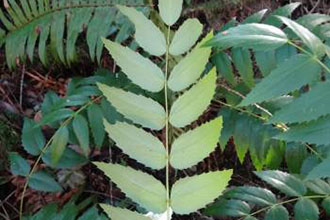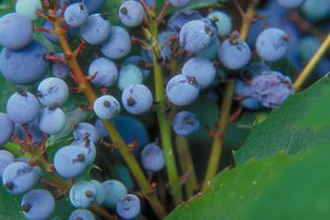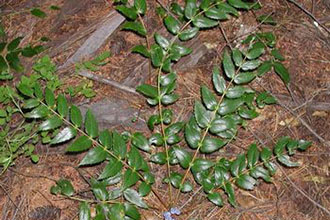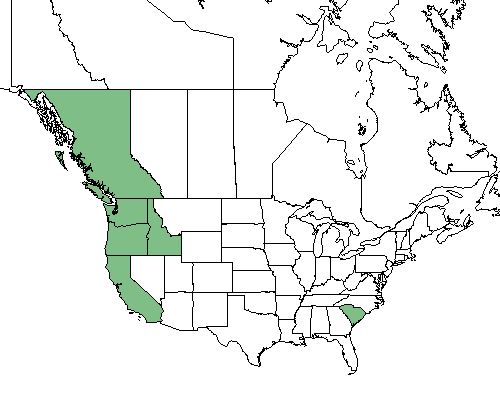Taxonomy: Kingdom - Plantae (plants). Subkingdom - Tracheobionta (vascular plants). Superdivision - Spermatophyta (seed plants). Division - Magnoliophyta (Flowering plants). Class - Magnoliopsida (Dicotyledons). Subclass - Magnoliidae. Order - Ranunculales. Family - Berberidaceae (Barberry familly). Genus -Berberis Nutt. . Species - Berberis nervosa (Pursh) Nutt. - Cascade barberry.
Ecology: A shade-tolerant/intolerant, submontane to montane, Pacific North American evergreen shrub. Occurs in maritime to submaritime cool mesothermal climates on moderately dry to fresh, nitrogen-medium soils; its occurrence decreases with increasing precipitation, elevation, and continentality. Scatered to abundant, occasionally dominant, in the understory of semi-open forests (persists on cutover sites) on water-shedding sites. Inhabits coarse-skeletal soils. Commonly associated with Gaultheria shallon, Kindbergia oregana, and Polystichum munitum. Characteristic of mesothermal forests. In and west of the Cascades, southern British olumbia to central California. Open woods, sea level to moderate elevations in the mountains. Cascade barberry persists in closed forest stands with long fire-free intervals.



